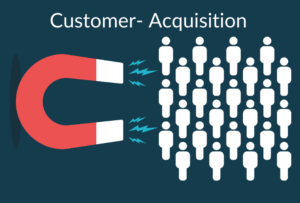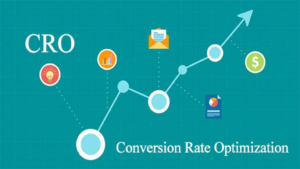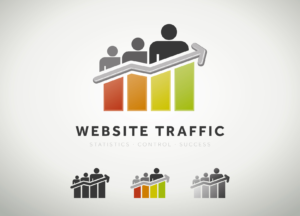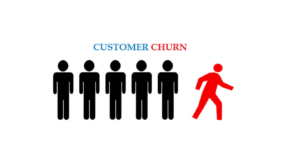Introduction
In today’s competitive business landscape, measuring marketing performance is crucial for success. By effectively tracking Key Performance Indicators (KPIs), businesses gain valuable insights into their marketing strategies, enabling them to make data-driven decisions and optimize their efforts. This article delves into the ten essential marketing KPIs that every business should track to drive growth and maximize their marketing potential.
KPI 1: Customer Acquisition Cost (CAC)

A. Definition and Significance of CAC
Customer Acquisition Cost (CAC) refers to the total cost incurred by a business to acquire a new customer. It encompasses various expenses such as marketing campaigns, advertising, sales efforts, and related resources. Understanding and monitoring CAC is essential because it provides insights into the effectiveness and efficiency of a company’s customer acquisition strategies.
B. Calculating CAC
To calculate CAC, divide the total acquisition costs (including marketing and sales expenses) by the number of new customers acquired during a specific period. This formula helps businesses evaluate the cost-effectiveness of their marketing initiatives and make informed decisions about resource allocation.
C. Factors Influencing CAC
Several factors can influence CAC, such as target market competitiveness, industry trends, customer acquisition channels, and customer segmentation. By analyzing these factors, businesses can identify areas where costs can be optimized, resulting in a more efficient customer acquisition process.
D. Strategies to Optimize CAC
To optimize CAC, businesses can employ strategies like improving lead generation techniques, refining their target audience, streamlining sales processes, and leveraging data analytics to identify the most effective marketing channels. Continuously monitoring and optimizing CAC can lead to improved marketing ROI and long-term profitability.
KPI 2: Customer Lifetime Value (CLV)

A. Understanding CLV
Customer Lifetime Value (CLV) measures the total value a customer brings to a business over their entire relationship with the company. It takes into account the customer’s purchase history, frequency of purchases, average transaction value, and retention rate. CLV is a critical metric as it helps businesses gauge the long-term profitability of their customer base.
B. Calculating CLV
To calculate CLV, multiply the average value of a customer’s purchase by the number of transactions per year and the average duration of the customer relationship. This formula provides a clear understanding of the revenue potential of each customer and enables businesses to allocate resources effectively.
C. Benefits of Measuring CLV
Measuring CLV allows businesses to identify high-value customers, segment their customer base, and tailor marketing efforts accordingly. It helps in identifying cross-selling and upselling opportunities, nurturing customer loyalty, and maximizing the revenue generated from existing customers.
D. Improving CLV through Customer Retention Strategies
By focusing on customer retention strategies, businesses can increase CLV. Providing exceptional customer service, personalized experiences, loyalty programs, and post-purchase engagement are effective ways to enhance customer satisfaction, loyalty, and overall CLV.
KPI 3: Conversion Rate

A. Definition and Importance of Conversion Rate
Conversion Rate is the percentage of website visitors or potential customers who take a desired action, such as making a purchase, filling out a form, or subscribing to a newsletter. It is a crucial metric as it indicates the effectiveness of marketing campaigns and the ability to convert prospects into customers.
B. Calculating Conversion Rate
To calculate the conversion rate, divide the number of conversions by the total number of visitors or leads and multiply the result by 100. This provides a clear understanding of the conversion performance and helps businesses optimize their marketing strategies.
C. Factors Impacting Conversion Rate
Several factors can influence the conversion rate, including website design, user experience, call to action effectiveness, pricing strategy, trust elements, and the overall value proposition. Analyzing these factors allows businesses to identify areas for improvement and implement strategies to increase their conversion rates.
D. Tactics to Increase Conversion Rate
To increase conversion rates, businesses can employ various tactics such as optimizing landing pages, improving website usability, enhancing product descriptions and visuals, offering incentives or discounts, implementing persuasive copywriting techniques, and leveraging social proof. Continuous testing and optimization are key to improving conversion rates and driving business growth.
KPI 4: Return on Investment (ROI)

A. Significance of Measuring ROI
Measuring Return on Investment (ROI) is crucial for assessing the profitability and effectiveness of marketing initiatives. It helps businesses understand the financial impact of their marketing efforts and make informed decisions regarding resource allocation and budget optimization.
B. Calculating ROI
To calculate ROI, subtract the marketing investment (including costs associated with campaigns, advertising, and promotions) from the revenue generated, and then divide the result by the marketing investment. Multiplying the outcome by 100 provides the ROI percentage. This calculation allows businesses to evaluate the success of their marketing campaigns in generating revenue.
C. Interpreting ROI Data
Interpreting ROI data enables businesses to identify the most effective marketing channels, campaigns, or strategies that provide the highest return. By analyzing the ROI of different initiatives, businesses can allocate resources to the most profitable areas and adjust their marketing strategies accordingly.
D. Enhancing ROI through Optimization
To enhance ROI, businesses can focus on optimizing marketing campaigns by tracking and analyzing key metrics, testing different strategies, targeting the right audience segments, and leveraging data-driven insights. Continual optimization based on ROI analysis leads to more efficient resource allocation and increased profitability.
KPI 5: Website Traffic

A. Measuring Website Traffic
Measuring website traffic involves analyzing the number of visitors, page views, and sessions on a website. It provides valuable insights into the reach and visibility of a business’s online presence.
B. Sources of Website Traffic
Understanding the sources of website traffic, such as organic search, social media, referrals, or paid advertising, helps businesses evaluate the effectiveness of their marketing channels and identify areas for improvement.
C. Analyzing Website Traffic Data
Analyzing website traffic data allows businesses to identify trends, patterns, and user behavior. It helps in understanding which pages or content are attracting the most visitors, how visitors navigate the site, and which channels are driving the highest quality traffic.
D. Strategies to Boost Website Traffic
To boost website traffic, businesses can employ strategies like search engine optimization (SEO), content marketing, social media promotion, paid advertising, influencer partnerships, and email marketing. By consistently implementing these strategies, businesses can increase their online visibility and attract more targeted traffic to their website.
KPI 6: Social Media Engagement

A. Defining Social Media Engagement
Social media engagement measures the level of interaction, such as likes, comments, shares, and clicks, that a business’s social media content receives. It reflects the audience’s interest and involvement with the brand.
B. Tracking Social Media Engagement Metrics
Tracking metrics like likes, comments, shares, click-through rates, and follower growth allows businesses to gauge the success of their social media efforts. It provides insights into the type of content that resonates with the target audience and helps in optimizing future social media strategies.
C. Enhancing Social Media Engagement
To enhance social media engagement, businesses can focus on creating compelling and shareable content, encouraging user-generated content, initiating conversations with followers, running contests or giveaways, and leveraging influencer partnerships. Building an active and engaged social media community fosters brand loyalty and amplifies brand reach.
D. Leveraging Social Media Insights
Analyzing social media insights and metrics helps businesses understand their audience demographics, preferences, and behaviors. By leveraging these insights, businesses can tailor their social media strategies, refine their content, and target their messaging to maximize engagement and drive business objectives.
KPI 7: Email Marketing Metrics

A. Importance of Email Marketing Metrics
Email marketing metrics provide valuable data on the effectiveness of email campaigns, customer engagement, and conversion rates. Measuring these metrics is crucial for optimizing email marketing strategies and maximizing the impact of email campaigns.
B. Tracking Email Open Rate and Click-Through Rate
Tracking email open rate and click-through rate allows businesses to gauge the success of their email campaigns in capturing the attention of recipients and driving them to take action. These metrics provide insights into the effectiveness of subject lines, email design, and call-to-action placement.
C. Evaluating Email Conversion Rate
Evaluating email conversion rate helps businesses understand the percentage of recipients who not only open and click on emails but also complete the desired action, such as making a purchase or filling out a form. This metric reflects the effectiveness of the email content, messaging, and overall conversion funnel.
D. Email Marketing Optimization Techniques
To optimize email marketing performance, businesses can focus on strategies such as segmenting their email lists, personalizing email content, A/B testing subject lines and email design, optimizing email deliverability, and leveraging marketing automation. These techniques enhance the relevance, engagement, and conversion rates of email campaigns.
KPI 8: Customer Churn Rate

A. Understanding Customer Churn
Customer churn rate measures the percentage of customers who discontinue their relationship with a business over a specific period. Understanding customer churn is vital as it directly impacts revenue and profitability.
B. Calculating Churn Rate
To calculate churn rate, divide the number of customers lost during a given period by the total number of customers at the beginning of that period. Multiplying the result by 100 provides the churn rate percentage. This metric helps businesses identify their customer attrition rate and assess the health of customer retention efforts.
C. Impact of Customer Churn on Business
High customer churn rates can have detrimental effects on a business, leading to reduced revenue, increased customer acquisition costs, and decreased profitability. Monitoring and addressing customer churn is essential for maintaining a healthy customer base and sustaining long-term growth.
D. Reducing Churn Rate through Retention Strategies
To reduce churn rate, businesses can implement various retention strategies such as enhancing customer support and service, implementing loyalty programs, conducting customer satisfaction surveys, providing personalized experiences, and proactively addressing customer concerns. These efforts foster customer loyalty, increase customer lifetime value, and mitigate churn risks.
KPI 9: Brand Awareness

A. Significance of Brand Awareness
Brand awareness measures the familiarity and recognition of a brand among its target audience. It is crucial as it directly influences consumer perception, trust, and purchase decisions.
B. Measuring Brand Awareness
Measuring brand awareness involves tracking metrics such as brand recall, brand recognition, social media mentions, and website traffic from branded searches. These metrics provide insights into the effectiveness of branding initiatives and the reach of the brand’s messaging.
C. Strategies to Enhance Brand Awareness
To enhance brand awareness, businesses can focus on strategies such as consistent brand messaging and visual identity, content marketing, influencer marketing, social media engagement, public relations efforts, and sponsorships. Creating a strong brand presence increases visibility, fosters brand loyalty, and attracts new customers.
D. Assessing Brand Awareness Impact on Marketing Efforts
Assessing the impact of brand awareness on marketing efforts involves analyzing metrics such as lead generation, website traffic, and customer acquisition rates. By understanding the correlation between brand awareness and marketing performance, businesses can fine-tune their branding strategies to maximize marketing effectiveness.
KPI 10: Social Proof and Reviews

A. Role of Social Proof in Marketing
Social proof refers to the influence and validation that individuals derive from the actions and opinions of others. In marketing, social proof plays a crucial role in building trust, credibility, and customer confidence.
B. Monitoring Customer Reviews and Ratings
Monitoring customer reviews and ratings across various platforms allows businesses to gauge customer satisfaction levels, identify areas for improvement, and address potential issues proactively. Positive reviews serve as social proof and can influence purchasing decisions.
C. Leveraging Social Proof for Business Growth
Businesses can leverage social proof by showcasing positive reviews and testimonials on their website, social media platforms, and other marketing channels. By highlighting satisfied customers and their experiences, businesses can enhance credibility, trust, and brand reputation.
D. Cultivating Positive Reviews and Testimonials
To cultivate positive reviews and testimonials, businesses can encourage customer feedback, provide exceptional customer experiences, incentivize reviews, and actively engage with customers on social media platforms. Cultivating a positive online reputation strengthens social proof and drives business growth.
Conclusion
In conclusion, tracking these ten essential marketing KPIs empowers businesses to measure their marketing performance effectively, make data-driven decisions, and optimize their strategies for success. By understanding and utilizing KPIs such as CAC, CLV, conversion rate, ROI, website traffic, social media engagement, email marketing metrics, customer churn rate, brand awareness, and social proof, businesses can drive growth, enhance customer relationships, and achieve marketing effectiveness in a competitive landscape. Continuous optimization, adaptation, and measurement of KPIs are crucial for sustained business success.